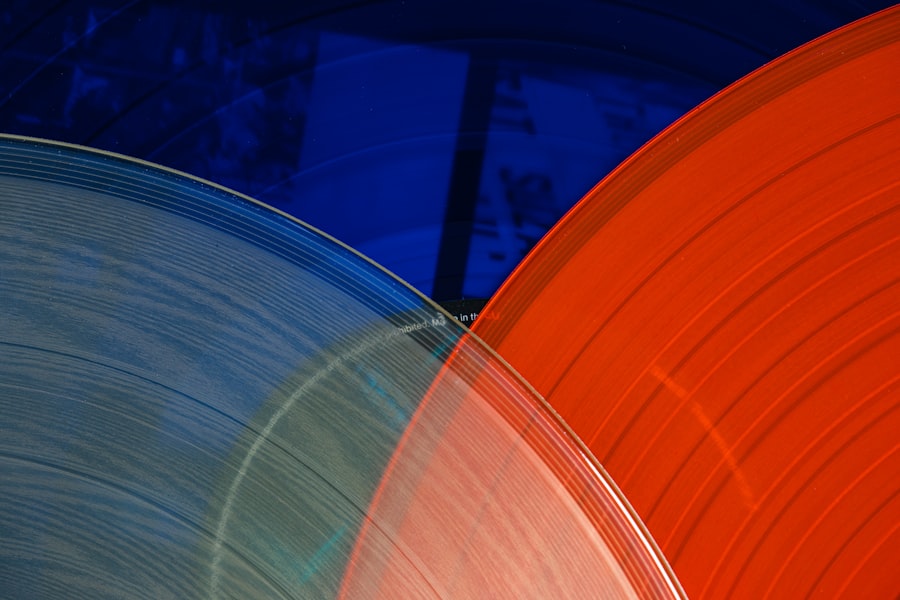When you think of a concept album, you might envision a cohesive narrative woven through a collection of songs, each track contributing to a larger story or theme. This artistic approach allows you to explore complex ideas and emotions in a way that standalone songs often cannot. Concept albums can transport you to different worlds, challenge your perceptions, and evoke deep feelings, all while maintaining a unified vision.
The beauty of a concept album lies in its ability to create an immersive experience, inviting you to engage with the music on multiple levels. As you delve into the world of concept albums, you may find that they often reflect the artist’s personal journey or societal issues. From Pink Floyd’s “The Wall” to Kendrick Lamar’s “good kid, m.A.A.d city,” these albums serve as powerful commentaries on life, identity, and the human experience.
By understanding the underlying themes and narratives, you can appreciate the artistry involved in crafting a concept album. It’s not just about the music; it’s about how each song interconnects to form a larger tapestry of sound and meaning, allowing you to experience the artist’s vision in its entirety.
Key Takeaways
- Concept albums are cohesive bodies of work that tell a story or explore a theme, often with a narrative or emotional arc.
- Visual themes should be chosen to complement and enhance the concept of the album, creating a unified visual identity.
- Visual elements such as album artwork, music videos, and stage design should be carefully crafted to reflect the chosen visual themes.
- Visuals can be incorporated into the music through multimedia performances, interactive album covers, and lyric videos.
- A visual story can be told through the sequencing of visuals, creating a narrative that complements the music and concept of the album.
- Collaborating with visual artists can bring fresh perspectives and expertise to the visual representation of the album’s concept.
Choosing Visual Themes:
Once you grasp the essence of a concept album, the next step is to choose visual themes that resonate with the narrative you wish to convey. Visual themes can enhance the storytelling aspect of your music, providing a visual representation that complements the auditory experience. You might consider elements such as color palettes, imagery, and symbolism that align with the emotions and messages embedded in your songs.
For instance, if your album explores themes of isolation and despair, darker tones and stark imagery may be more appropriate than vibrant colors and cheerful visuals. As you brainstorm visual themes, think about how they can evoke specific feelings or memories for your audience. The visuals should not only reflect the music but also enhance its impact.
You might draw inspiration from various sources—art movements, literature, or even personal experiences—to create a visual language that speaks to your listeners. By carefully selecting visual themes that resonate with your concept album’s narrative, you can create a more profound connection with your audience, allowing them to engage with your work on a deeper level.
Creating Visual Elements:

With your visual themes in mind, it’s time to start creating visual elements that will bring your concept album to life. This process can involve a variety of mediums, including photography, illustration, graphic design, or even video art. Each element should serve a purpose, whether it’s to illustrate a specific song or to represent the overarching narrative of the album.
You might find it helpful to sketch out ideas or create mood boards that capture the essence of your vision before diving into the actual creation process. As you develop these visual elements, consider how they will be used across different platforms. Album covers, promotional materials, and social media graphics all provide opportunities to showcase your visuals.
Consistency is key; by maintaining a cohesive aesthetic throughout all visual representations of your album, you reinforce the connection between the music and its accompanying imagery. This attention to detail not only enhances your artistic expression but also helps establish your brand as an artist, making it easier for listeners to identify and connect with your work.
Incorporating Visuals into the Music:
Integrating visuals into your music can elevate the listening experience and create a more immersive environment for your audience. One effective way to do this is through music videos that visually interpret your songs. A well-crafted video can add layers of meaning and context, allowing viewers to engage with the music in a new way.
You might choose to tell a story that aligns with the lyrics or create abstract visuals that evoke the emotions behind the sound. Additionally, consider how live performances can incorporate visual elements. Using projections, lighting design, or stage sets can transform a concert into a multi-sensory experience.
By synchronizing visuals with your music, you create an atmosphere that captivates your audience and enhances their emotional connection to the performance. This integration of visuals not only enriches the overall experience but also reinforces the themes present in your concept album, making it more memorable for those who attend.
Telling a Visual Story:
At its core, a concept album is about storytelling—both through music and visuals. As you craft your visual narrative, think about how each element contributes to the overall story you want to tell. This could involve creating a series of images that follow a character’s journey or using symbolism to represent key themes throughout the album.
The goal is to create a visual arc that mirrors the musical progression, allowing listeners to follow along as they navigate through the emotional landscape you’ve created. You might also consider how different mediums can tell different aspects of your story. For example, an animated short film could explore themes in greater depth than a static image or even a live-action video.
By experimenting with various formats and styles, you can find unique ways to express your narrative visually. Ultimately, telling a visual story alongside your music allows you to engage your audience on multiple levels, inviting them to immerse themselves fully in the world you’ve created.
Collaborating with Visual Artists:

Collaboration can be one of the most rewarding aspects of bringing your concept album to life. Working with visual artists—whether they are graphic designers, illustrators, or filmmakers—can provide fresh perspectives and ideas that enhance your vision. By sharing your concepts and themes with these artists, you open up opportunities for creative synergy that can lead to innovative visual interpretations of your music.
When collaborating with visual artists, communication is essential. Be clear about your vision while remaining open to their interpretations and suggestions. This collaborative process can lead to unexpected results that enrich both the music and visuals.
Additionally, involving artists from diverse backgrounds can introduce new styles and techniques that elevate your project beyond what you could achieve alone. Ultimately, these collaborations not only enhance your concept album but also foster connections within the creative community, allowing you to grow as an artist while creating something truly unique. In conclusion, creating a concept album is an intricate process that involves understanding narrative structures, choosing compelling visual themes, and integrating those visuals into both music and performance.
By telling a cohesive visual story and collaborating with talented artists, you can elevate your work and create an immersive experience for your audience. Embrace this journey as an opportunity for artistic growth and expression; after all, music is not just about sound—it’s about creating an experience that resonates deeply with those who listen.



